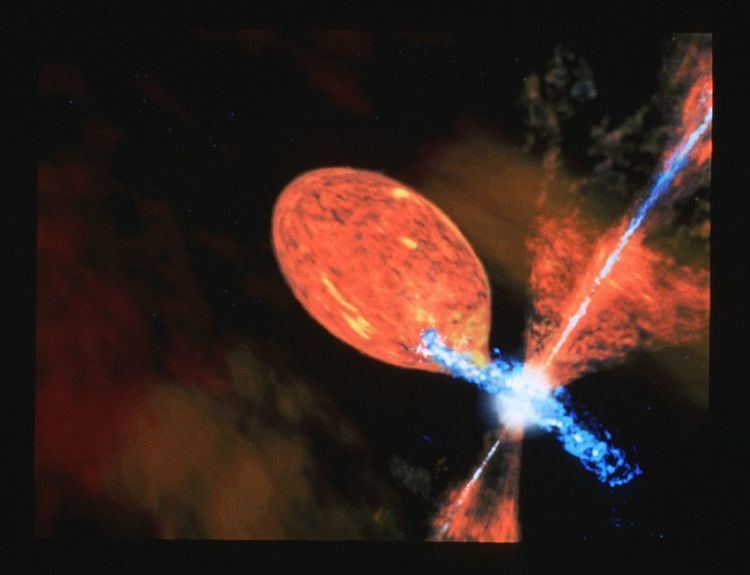 | ||
A symbiotic star is a type of binary star. They are usually a white dwarf with a companion late sequence red giant. They are indicated by the exhibition of spectral lines of the highly contrasting temperatures of the red giant (~3000 K) and the white dwarf (~20 000 K). The white dwarf gains mass from stellar wind from the red giant or gravitational streaming.
Contents
Symbiotic stars are of particular interest to astronomers as they can be used to learn about stellar evolution. They are also vital in the study of stellar wind, ionized nebulae, and accretion because of the unique interstellar dynamics present within the system.
Discovery
The term 'symbiotic star' was first used in 1958 in a publication about 'stars of composite spectra'. However, the distinct category of symbiotic stars had been previously known. They were first recognized as a class of stars with unique spectroscopic qualities by Annie Cannon near the beginning of the 20th century. Their binary nature was made clear by the simultaneous existence of the spectral lines indicative of a red giant and of a white dwarf or neutron star.
Phases
One of the requisite conditions for a star to be defined as symbiotic is an interaction between stars. This is typically a transfer of mass from the larger, giant star to the dwarf star. Depending on the rate of the emissions from the giant to the dwarf, the system can be divided into two phases.
Quiescent phase
When the accretion, mass-loss and ionization processes are all in equilibrium between the stars, the system is said to be in quiescence. At this point, the system will continue to release energy at an approximately average rate. This can be observed through the spectral energy distribution (SED) of the star which will be remain relatively constant.
Active phase
If the equilibrium of a quiescent symbiotic star is disturbed, it will transition into an active phase. This phase is shown through a large change in both the nature of the radiation from the star, and a brightening of the optical emission of the star by several magnitudes. The transitions between phases are poorly understood, and it is currently difficult to predict when a star will transition into an active phase from quiescence, or when it will return to quiescence. Many systems have not yet been observed to enter an active state. Others, however, such as AG Dra enter active phases on a regular and cyclical basis.
Jets
Some symbiotic stars have jets which are a collimated outflow of material. These typically are bi-polar and extend from both poles of the white dwarf. Jets are most commonly observed on stars which are currently in active phase or outburst. Once the outburst has ended, the jet fades and the ejected emissions dissipate. It has been argued that the jets present in symbiotic stars could help further the understanding of jets in other systems, such as in active galactic nuclei.
